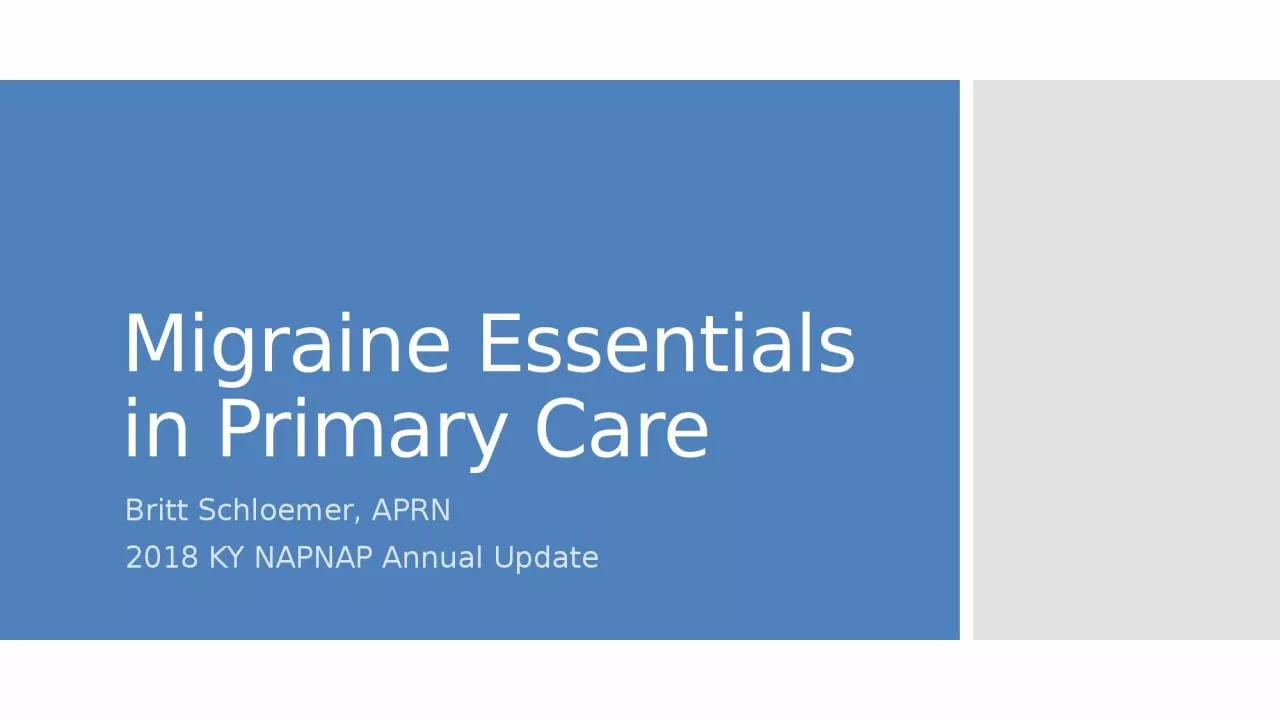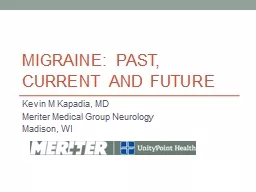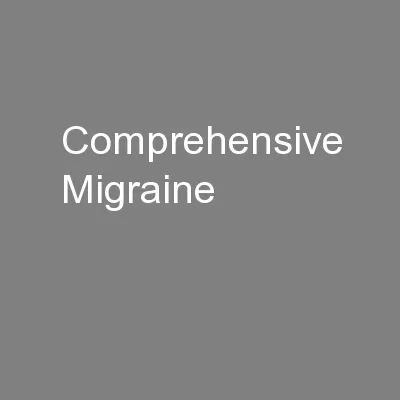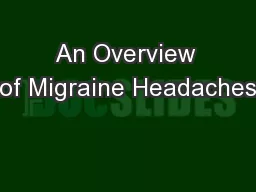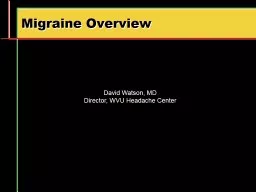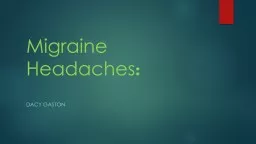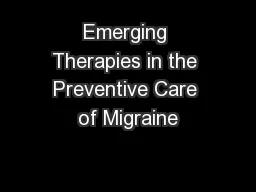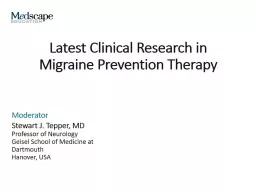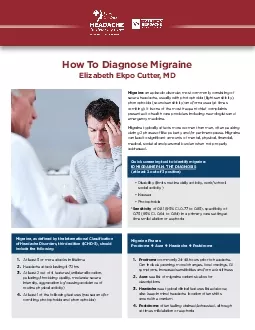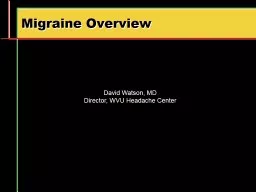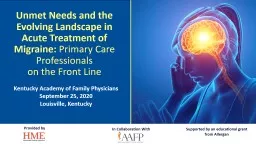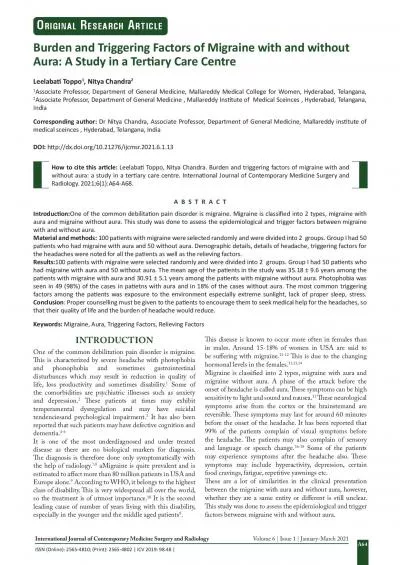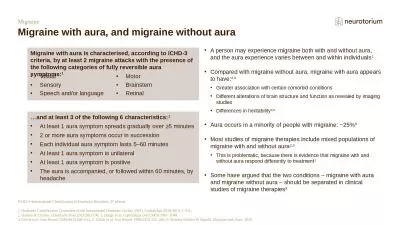PPT-Migraine Essentials in Primary Care
Author : unita | Published Date : 2022-06-15
Britt Schloemer APRN 2018 KY NAPNAP Annual Update Objectives Describe what a migraine is Present an update on acute migraine treatment recommendations Discuss treatment
Presentation Embed Code
Download Presentation
Download Presentation The PPT/PDF document "Migraine Essentials in Primary Care" is the property of its rightful owner. Permission is granted to download and print the materials on this website for personal, non-commercial use only, and to display it on your personal computer provided you do not modify the materials and that you retain all copyright notices contained in the materials. By downloading content from our website, you accept the terms of this agreement.
Migraine Essentials in Primary Care: Transcript
Download Rules Of Document
"Migraine Essentials in Primary Care"The content belongs to its owner. You may download and print it for personal use, without modification, and keep all copyright notices. By downloading, you agree to these terms.
Related Documents

